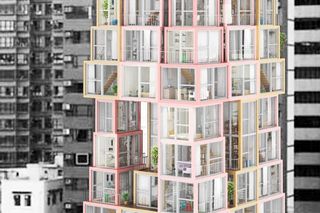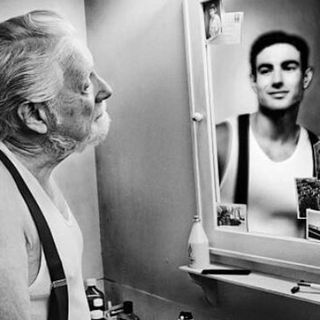
How Average Home Sizes Vary Around the World
And what their sizes mean for the health of their occupants.

Average home size around the world varies dramatically, with important implications for the people living in those spaces.
The spectrum is wide. Australia appears to have the One source, at an average of 2303 ft2. On the other extreme lies Hong Kong, with an average housing area of 484 ft2. It’s hard to pinpoint a global average home size, because there is no data available for so many places.
Presently there is no single, accurate figure for Indian home sizes. One source pegs the average rural home at 494 ft2 and urban home at 504 ft2; one source has the urban home average at 1100 ft2.
What’s important to note is that with growing population and congestion in urban areas, the average living space for an individual is gradually diminishing every year. According to Jones Lang LaSalle, there is a shortage of housing for 18.78 million urban people. Of those who live in metro cities, 80% of those people (14.99 million) live in housing that’s less than 300 ft2.
While we can assume that Indian homes may not be the smallest, our culture often supports joint family dynamics, which means while the house might be bigger, there are also many more people living in the house, bringing down the average available space per individual.
And India isn’t the only place experiencing this rising problem of diminishing spaces. Around the world urbanization has led to increasingly crammed quarters, for the lack of space as well as high prices in realty. In Hong Kong, to tackle the problem of insufficient housing space, designs have been made to introduce micro-apartments, which are cylindrical housing spaces about 100 ft2 in size, made in concrete water pipes. Eventually, even Indian cities might need to resort to such measures to accommodate ever-growing urban populations.
But what does it mean to live in increasingly small spaces? Small housing spaces may come with their own health problems for inhabitants.
“Sure, these micro-apartments may be fantastic for young professionals in their 20’s,” Dak Kopec, director of design for human health at Boston Architectural College and author of Environmental Psychology for Design told The Atlantic. “But they definitely can be unhealthy for older people, say in their 30’s and 40’s, who face different stress factors that can make tight living conditions a problem.”
A study published in the Journal of Urban Health, talks about how poor quality of housing can increase psychological distress, aggression and depression in an individual. This includes residential crowding that is dependent of the number of people per room, as well as lack of sufficient daylight, that may come into play with small apartments. This particularly becomes a problem for Indians, who often live in joint families in small residential spaces.
And this is not just a problem for adults, but also children, who are affected by small living spaces. According to a 2012 study, small and crammed housing spaces can affect a young child’s well-being. According to the research, crowding housing affected school achievement, social behavior, as well as physical health in young children.
Yet another study published in 2016 shows that adolescents living in crowded homes are less likely to study and complete graduation by 25. “These negative relationships persist in multivariate models in which we control for the influence of a variety of factors, including socioeconomic status and housing-cost burden,” writes the study’s author.
However, according to Jennifer Cross, from Colorado State University, while the size of the apartment is important, what’s more important is the view and surroundings. “In the hospital literature, people heal faster in hospital rooms when they have a view of nature,” she told Undark. “So if you’re thinking about affluent micro-housing and poor micro-housing, it’s not just ‘how many people per square foot,’ but, ‘do they have a view?’”
An important consideration, if you have a choice.
Angelina Shah is a staff writer with The Swaddle. In her previous life she was a copywriter in advertising. She has a penchant for reading, singing, travelling and being obsessed with superheroes.
Related


What Does It Mean When New Research Debunks Parenting Buzzwords?
